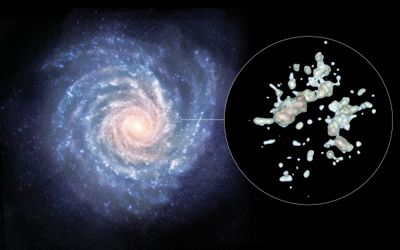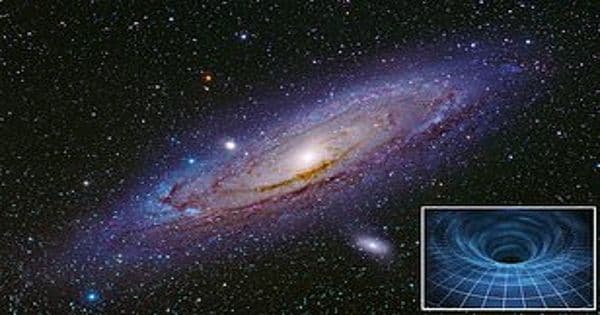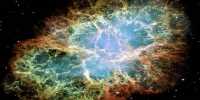The International research team, including a number of scientists from the Max Planck Institute for Radio Astronomy in Bonn, Germany, used the APEX submillimeter telescope at an altitude of 5100 m in Chile to map an expanded portion of the Southern Galactic plane covering an area of more than 80 square degrees. Scientists at Cardiff University have helped to create a recent three-dimensional survey of our galaxy, helping them to peer into the inner structure and observe the star-forming processes in unparalleled depth.
The large-scale survey, called SEDIGISM (Structure, Excitation, and Dynamics of the Inner Galactic Interstellar Medium), revealed a broad variety of structures within the Milky Way, from individual star-forming clusters to massive molecular clouds and complexes, which will enable astronomers to continue to explore the limits of what we know about the structure of our galaxy.
UK ASTRONOMERS have produced a new 3D, detailed map of the Milky Way galaxy, made up of more than two billion stars, which could help scientists predict the future of our home galactic region.
SEDIGISM was unveiled today by publishing three independent articles in the Monthly Notices of the Royal Astronomical Society, published by a multinational team of over 50 astronomers. This survey helps one to limit the large-scale distribution of cold molecular gas in the inner galaxies and eventually unravel the structure of the Milky Way.
“With the publication of this unprecedentedly detailed map of cold clouds in our Milky Way, a huge observational effort comes to fruition,” says Frederic Schuller from the Max Planck Institute for Radio Astronomy (MPIfR), lead author of one of the three publications, presenting the data release.
Dr. Ana Duarte Cabral, a research fellow at the University of Cardiff School of Physics and Astronomy, was the editor of one of the articles and provided a catalog of over 10,000 molecular gas clouds in our Milky Way.

Data from the survey was used to study the distribution of cold molecular clouds and the volume of star formation in the inner region of the Milky Way in unparalleled detail. The Milky Way, named for its hazy presence from Earth, is a spiral galaxy with an approximate diameter of between 170,000 and 200,000 light-years, comprising between 100-400 billion stars.
The Milky Way is a central area surrounded by a distorted disk of gas and dust that contains the raw materials from which new stars are produced. For Dr. Duarte Cabral, a new database of gas clouds would enable scientists to investigate precisely how the spiral shape of our own Milky Way influences the life cycle of clouds, their structures, and, eventually, the creation of stars within them.
“What is most exciting about this survey is that it can really help pin down the global galactic structure of the Milky Way, providing an astounding 3D view of the inner galaxy,” she said. “With this survey, we really have the ability to start pushing the boundaries of what we know about the global effects of the galactic structures and dynamics, in the distribution of molecular gas and star formation, because of the improved sensitivity, resolution, and the 3D view.”
The molecular gas cloud catalog was developed by calculating the unusual carbon monoxide molecule isotope 13CO using the highly sensitive 12-meter Atacama Pathfinder Experiment telescope on the Chajnantor plateau in Chile.
This helped the team to make more reliable calculations of the mass of the gas clouds and to discern details about their velocity, thereby offering a genuinely three-dimensional image of the galaxy. Dr. Duarte Cabral and his team are now starting to collect information from the large volume of data at their disposal.
“The survey revealed that only a small proportion, roughly 10 percent, of these clouds have dense gas with ongoing star formation,” said James Urquhart of the University of Kent, the lead author of the third publication. Similarly, the findings of the work led by Dr. Duarte Cabral suggest that the structure of the Milky Way is not as well defined and that the spiral arms are not as simple. They have also shown that the properties of clouds do not appear to depend on whether a cloud is situated in a spiral arm or an inter-arm area, where very different physics is assumed to play a part.
“Our results are already showing us that the Milky Way may not be a strong grand design type of spiral galaxy as we thought, but perhaps more flocculent in nature,” Dr. Duarte Cabral added.
“This survey can be used by anyone that wants to study the kinematics or physical properties of individual molecular clouds or even make statistical studies of larger samples of clouds, and so in itself has a huge legacy value for the star formation community.”
















